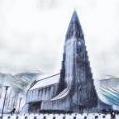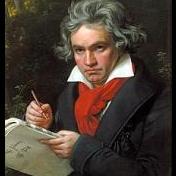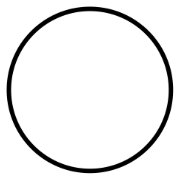Leaderboard
Popular Content
Showing content with the highest reputation on 10/24/2020 in all areas
-
METAMORPHOSIS YC Composer Competition - Autumn, 2020 I. Topic: All entrants must compose a unique piece that is based on the same melody. The fragment chosen by member vote is: Takashi Yoshimatsu, "Waltz of Rainbow Colored Roses" - https://youtu.be/3qihgGETXwc ***To be clear, entrants do not have to use the whole piece as the basis for their compositions, only the short fragment identified in the member voting post and now attached to this post. *** While a traditional "theme and variations" form is not required, judges will be looking for effective treatment and development of the chosen theme as a central aspect of each composition. The theme itself will be chosen by the judges from the nominated melodies submitted privately to the judges by entrants and members of the YC community at large. II. Eligibility: 1. You must be a member of the Young Composers forum in order to enter. Sign ups will be in the comments below for JUDGE or ENTRANT. Comment "I'd like to enter as ____" for entry. 2. There will again be no limits regarding instrumentation. There is no minimum length, but there is a maximum length of 15 minutes. 3. You must have some sort of audio rendition accompanying your work. 4. You must present a score of your music for judging. 5. If you volunteer to be a judge, you may not enter as a contest participant. III. Scoring: Due to a lack of sufficient judges signing up for this competition, scoring will be by member voting only. ALL ENTRANTS: PLEASE MESSAGE ME, @Noah Brode, WITH AN MP3 AND PDF SCORE OF YOUR SUBMISSION TO BE POSTED ANONYMOUSLY ON THE APPROPRIATE FORUM. ONCE ALL OF THE SUBMISSIONS ARE POSTED, YOU WILL HAVE ROUGHLY TWO WEEKS (SEE TIMELINE BELOW) TO PRIVATELY MESSAGE ME YOUR FIRST, SECOND, AND THIRD-PLACE CHOICES FOR THE COMPETITION (OBVIOUSLY NOT INCLUDING YOUR OWN SUBMISSION). I WILL TALLY UP THE SCORES AND RELEASE THE RESULTS WITHIN A FEW DAYS OF THE FINAL DEADLINE (DEC. 27). THESE WILL BE THE ONLY SCORES OF THE COMPETITION; THE WINNER OF THE MEMBER VOTING PROCESS WILL BE THE WINNER OF THE COMPETITION. NOTICE THAT ALL OF THE DEADLINES HAVE BEEN PUSHED BACK BY ROUGHLY ONE WEEK. Member Voting: Once submissions have been entered, members will get three votes in which to vote on each other's pieces. These votes are tiered, meaning you will vote for your favorite entry, your second favorite entry, and your third favorite entry. The criteria or reasons for your vote need not be explained, though participants are highly encouraged to leave reviews on each other's works regardless. Members will send their first, second, and third choice picks to the judges after the submission deadline. Failure to do so will result in disqualification. Traditional Judging: 1. How well is the central process of the piece executed? How effective is the progression, or in the case of a lack of a linear one, how well is it represented? Most importantly, how internally consistent is the piece in the construction of a narrative? /15 2. How well is the piece orchestrated? Do instrumental orchestration (range, ability, etc.) and voice leading seem to be appropriate? How effective is the treatment of the ensemble? /15 3. How well integrated is the fragment to the composition as a whole? How central is the use of the fragment in the construction of the piece? /15 4. How clear is the score and audio of the submission? /5 5. A brief written segment (1-2 sentences) is required to explain the premise of the piece, if any. /0 Entrants whose primary language is not English are encouraged still to participate, as the diction and syntax themselves will not be judged. Timeline: Members will submit entries by first submitting their piece to the judges, both the score and the audio file. Each entry will then be posted by a judge or judges. SUBMISSION DEADLINE FOR ENTRANTS: FRIDAY, DECEMBER 11, 11:59 PST JUDGING DEADLINE FOR ENTRANTS: SUNDAY, DECEMBER 27, 11:59 PST Current Entrants: @Bradley Scarff @Left Unexplained @caters @PaperComposer @Joshua Ng @Hendrik Meniere @bkho @Aled Edwards @Ivan1791 (backup judge) @zhenkang @Leonardo C. Núñez @Thatguy v2.0 @luderart Current Judges: @Tónskáld4 points
-
I don't think there's a good answer to this question, because we would have to survey composers long dead as to their reasons for using 2/2 vs. 4/4 vs. 3/2, etc. It probably has something to do with the time signatures and tempi of popular dance music of the early Baroque period. For example the courante (at least the French version) was in a slow and stately 3/2 time. The bourée and gavotte were in cut or double time, and were faster, more lively dances. These time signatures and tempi likely became associated with each other when early Baroque composers were in their heyday, and the practice continued over time. There is something to be said of the different beats, however. For example, a song in 2/2 and the same song in 2/4 would have different beats emphasized, and my guess is that the 2/2 would "sound" faster, even if it really isn't—something of an optical illusion for the ears. But that's all very subjective.1 point
-
1 point
-
1 point
-
1 point
-
Hi Joshua, see my note to Quinn just above. Sorry for the confusion.1 point
-
1 point
-
Thank you for your feedback! I am really glad that my piece prompted you to imagine a story like this!1 point
-
"Takashi Yoshimatsu, "Waltz of Rainbow Colored Roses" " Oh God-d-d. It's in a key by the look of that b-shaped thing immediately after the clef.......I presume if one enters, one need take no notice of that and doesn't have to follow the harmonic pattern. Edit: Crikey, it's LONG. Entrants have to do a make-over of the whole thing? It'll take a day copying it into the daw.1 point
-
Hi, could I ask it I could use only a shortened version of the piece as a theme for a theme and variations? Or do I need to quote the piece in full if I were to use that form?1 point
-
1 point
-
That might explain why 3/2 is used for very slow tempi, but it doesn't explain why even though in theory 2/2 could be interpreted as being slow like 3/2 is, in practice 2/2 is virtually always used for the very fast tempi.1 point
-
1 point
-
I would also like to enter as entrant/participant. Stoked about this competition as well. Not my number one pick for the theme/fragment but I've already started working on it.1 point
-
1 point
-
I would like to enter as a participant. I'm very much looking forward to this.1 point
-
1. Allegro (sonata form) 2. Andante cantabile (sonata form) 3. Vivace (rondo form) Scoring: Solo Oboe, Flute, 2 Oboes, 2 Bassoons, 2 Horns, Strings. Composed March 13 - May 4, 2018. The first considerable work I composed in 2018, this is a pretty standard Classical-style concerto, my second complete major work for solo instrument and orchestra. I'd like to believe it's an attractive work that showcases the soloist well. I consulted a classical oboist during and after working on this piece, and I was told that it was "considerably difficult, but not impossible" to play on the classical oboe, particularly the several high-Es I have called for, some of the passage work in the development section of the first movement, and the "frightful" series of descending chromatic trills I wrote in the middle of the second movement. He also told me that some of the difficulty would be mitigated on the modern oboe, which should come as little surprise - the limitations of 18th Century instruments were what prompted instrument makers to "improve" them during the first half of the 19th Century. Finally, he said that the writing was in a bravura style reminiscent of 18th Century French composers of oboe concerti, which I found interesting, because I was not familiar with any of the composers he mentioned. At any rate, I wouldn't mind at all any feedback from oboists on the idiomatic qualities and difficulty of this piece, for future reference. Any other feedback is naturally welcome as well. I have provided a cadenza, but of course the soloist is welcome to compose his/her own. In the interest of full disclosure, since good composers borrow and great ones steal, I have appropriated four measures of music from Domenico Cimarosa (1749-1801) in the B theme of the Rondo (final movement). Enjoy!1 point
-
This is a short, jazzy melody that has actually been floating around in my head for quite a while, but I had to figure out how precisely to transport it from my head into Musescore. It's only about a minute long. I was thinking of incorporating it into the scherzo of my next symphony if I do one. I feel like you wouldn't normally find jazz in a symphony. It's on piano for now, but I would probably have different instruments playing it later on.1 point
-
Here is something fun, I hope. Take a famous, well-respected composer's work and then post a work by his or her teacher that you can hear the teacher's influence upon the composer. I'll start with Bach. His teacher was George Bohm (1661-1733), a well-known and one of the finest composers of the North German School. In addition to Bohm Buxtehude (1637 - 1707) was, of course, a major influence on Bach and the Baroque in general. As you may know Bach traveled days to hear Buxtehude play. Bach ended up staying there several months before returning - to the consternation of his employers. BOHM Here is Bohm's Prelude Fugue and Postlude in G minor - http://www.youtube.c...feature=related Here is Bohm's Prelude and Fugue in C BUXTEHUDE Buxtehude's Praeludium in G minor (Bwv 149). http://www.youtube.c...h?v=M3xDVwYo-YA Note the strong influence of Italian opera at this time. Popora, an excellent Italian opera composer offers a good example of what Buxtehude was translating to instrumental works with the organ which could offer the greatest dynamic range and orchestral color to match the opera stage. http://www.youtube.com/watch?v=nyIUpGnqgKE The sectional form highlights contrasting timbres/textures and forms to create a dramatic arch. There are recitativ like sections with singing lines followed by more homophonic passages and fugal sections - much like a Baroque opera. This makes the Buxtehude harder to play than many of Bach's works as it is difficult to maintain a proportional pulse and yet a singing, slightly improvisatory feel without letting the whole thing sounding rambling. Note the comparison to Bohm's Prelude where the form is no longer as sectional or contrasting. With Bohm, greater attention is paid to motivic consistency and less dramatic harmonic digressions, and of course, the sections of recitative, aria like sections are gone. Also just the overall form - a Praeludium is a sectional work intended to start a church service or event - yet it could be performed outside its liturgical function due to the dimensions Buxtehude stretched the work. Yet, note how with Bohm, the fugue becomes its own piece as a companion to the prelude. Up to present day organists will play the Prelude at the start and the fugue as a postlude of a service ... if both are very short as in Bach's Little Prelude and Fugues, thenboth may be played either at the start or end. Buxtehudes' Praeludium in C (Bwv 136) Note with the Bohm and Buxtehude - the rising scalar figure is a prominent figure for development in the C major works!. BACH This Prelude and Fugue in C was inspired by Bohm's - particularly for the pedal solo http://www.youtube.c...feature=related The Prelude and Fugue in G minor (535 - early one) (the sequence of diminished chords in the prelude is noteworthy for the length Bach allows it to continue) Swingle Singers do the Fugue in G minor (The Great) of Bach - this is when you just are amazed at the Swingle Singers --- I mean how the heck did they get some of those passages at that speed. (Oh wait here is another great Swingle Singer piece from Partita 5)1 point







.thumb.png.8b5b433a341551e913a34392660bc95b.png)
